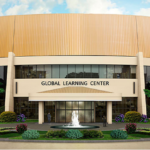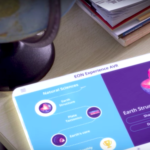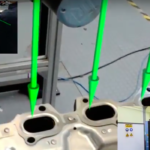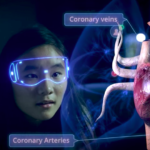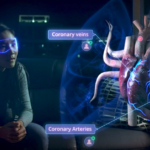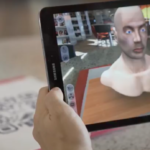ORU Programs Create Easy Application of Augmented & Virtual Reality in Higher Education
Oral Roberts University streamlines lesson development for instructors
Creating a lesson in virtual reality is as easy as getting ready for work. Could this possibly be true?
For many educators, the idea of creating a lesson in augmented or virtual reality can be daunting. And even if one fully understood how virtual reality works, trying to find or create the content needed for one lesson could take hours or perhaps days. One university met this challenge and the results are amazing.
As quickly as augmented and virtual reality is taking off in education, there is one thing we know. It will never reach it’s full potential until there is a quick and easy way to use these powerful technologies in creating lesson plans. Augmented and virtual reality are being extensively adopted at The Global Learning Center at Oral Roberts University giving their online students worldwide rich and relevant hands-on learning experiences. The state of the art facility has ten AR/VR enabled rooms and a studio equipped with the EON Reality Icube virtual environment. More importantly, instructors have instant access to a repository of over 10,000 objects for recording lessons or teaching live.
The rooms have been designed so that instructors simply put in their 10-digit phone number and the room comes to life designed specifically for them. If teaching live, for example, it automatically connects the room to remote students using videoconferencing, Zoom. If they are not teaching live, it instinctively brings up the AR/VR platform and object repository. If that isn’t simple enough, the tools are intuitive, making it easy to create a lesson.
For example, to design a lesson around the intricacies of the human eye, a professor can quickly find 3D objects and video footage needed and with the click a button can add voice over to guide students through the lesson. Students are given a link to access the lesson on whatever device the prefer. For the full VR effect, students use a headset or viewer. The university recommends a clip-on 3D viewer that easily snaps onto a smartphone.
Oral Roberts has designed their learning center and virtual learning environments with such simplicity. According ORU’s Chief Information Officer, Michael Matthews, “It is estimated that these tools will allow students to learn four times faster and studies show results could be far more impressive than that.” Well done Oral Roberts University, for giving faculty members immense capabilities with the simplicity that actually lightens their workload!
When Michael Matthews became CIO of Oral Roberts University (ORU) many faculty members did not know what to expect. They were quite surprised to find that he wanted to empower them to teach in ways they never dreamed but also had their best interest at heart with a goal to make their lives easier.
The first thing he did was to give them the ability to manage their gradebook through their Fitbit, wearable device. This was their initial experience at being given access to powerful technologies that can lighten their workload. Matthews didn’t stop there. By collaborating across the university, ORU integrated over 30 disparate systems into one seamless system making access simple. 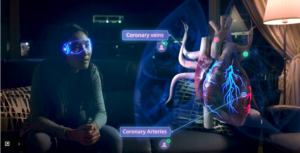 Furthermore, one of the most powerful tools given to faculty was the ability to develop high tech, augmented or virtual reality lesson plans in a matter of minutes.
Furthermore, one of the most powerful tools given to faculty was the ability to develop high tech, augmented or virtual reality lesson plans in a matter of minutes.
ORU serves students from 100 different countries and all 50 U.S. states while focusing on educating the whole person. Through a substantial investment of $8.5M, a new Global Learning Center was built with the goal to create new paradigms in using technologies to reach millions. In countries like Ghana, for example, where they have a 100 percent 4G digital wireless network, online students have access to ORU’s AR and VR library. Students only need a smartphone, decent Internet and a piece of paper the size of a business card to experience an immersive lesson. On campus, students can experience the fully immersive EON Icube virtual environment.
Examples of How Augmented and Virtual Reality is Used in Classrooms and Online
The university’s global approach is to use augmented and virtual reality (AVR) to serve on campus and online students. Students abroad can immerse themselves in 3D lessons asynchronously or join a live classroom through a video conferencing tool called Zoom. When an instructor enters any one of the 10 AVR enabled classrooms at the center, the lights automatically come on. Once they enter their 10-digit phone number, the AVR platform is launched and repository with over 10,000 3D objects is made available. I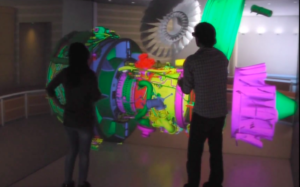 n addition, if it is time for class, the room instantly connects them to the appropriate remote campuses and online students.
n addition, if it is time for class, the room instantly connects them to the appropriate remote campuses and online students.
Anyone can quickly create augmented and/or virtual reality lessons then store them in the LMS to use whenever needed for years to come. Once created, they simply send a link to students so they can access it on whatever device they prefer.
With the simplicity and ease of use, AR and VR are being utilized across multiple departments and disciplines. Professors provide hands-on experiences which is a much more effective way to teach. Adoption and utilization has risen at a rapid rate due to the immense capabilities and the simplicity to create. In fact, professors can take part in a program that certifies them to create and license their courses to other universities who use the EON platform.
The impact of recent hurricanes has lead ORU to demonstrate how quickly educators can be nimble, responsive and helpful given the right tools. By partnering with 3Dream Studios, they were able to create an app called Hope4Homes focused on training people in how to deal with environments effected by flooding. Whether repairing drywall or dealing with mold, the AVR app provides desperately needed just-in-time training.
This is just one example of the tremendous educational affordances AVR tools can bring. According to the Universities CIO, Michael Matthews, “It is estimated that these tools will allow students to learn four times faster and studies show results could be far more impressive than that.” Winning numerous awards for their work, Oral Roberts University is a fine example of how to effectively bring teaching and learning into the digital age.

